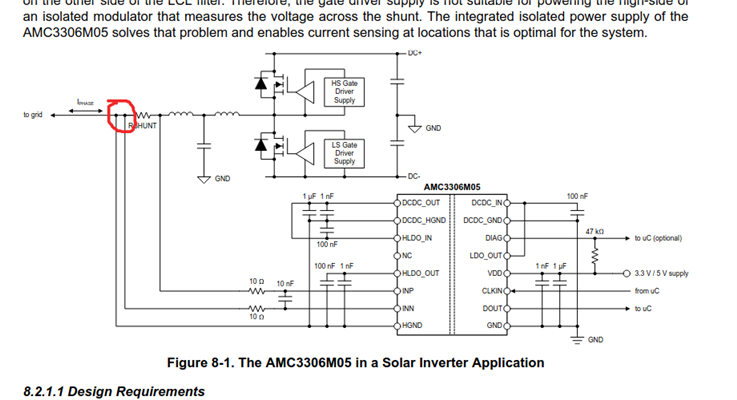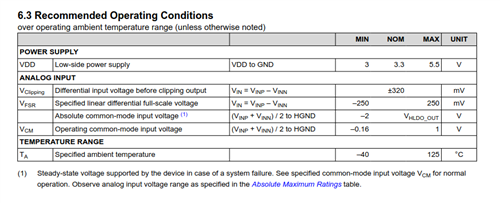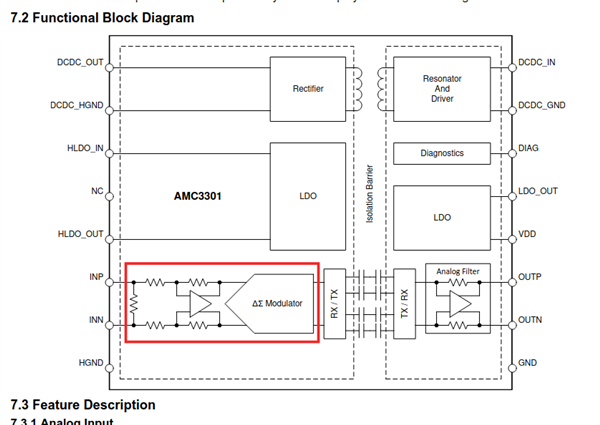Other Parts Discussed in Thread: AMC3302, AMC3301
Hi Experts,
While selecting components, I got to read up on using this IC to measure bi-directional currents. But I have a doubt on seeing this application circuit.

Since, INN and HGND is shorted together(Although 10ohm resistor provides very low impedance in between still shorting the INN to ground). How is the modulator able to measure the voltage when INP goes below the INN when current is flowing in one direction making absolute voltage at INP with respect to INN(HGND) as negative?



